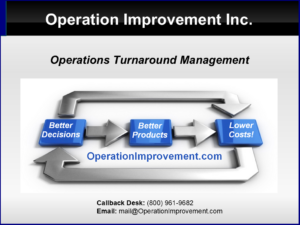Archive
What Project Management Certifications May Not Teach You
Tactical Management Principles For Project Managers
- Goals (strategic management) provide purpose; without clear goals, objectives and projects lack direction.
If there is no clear objective, then everything else fails.
- Everything ASAP makes projects late.
Treating every task as ASAP dilutes priorities, triggers multitasking chaos, and makes projects late.
- Prepare to accept varying risk tolerance across projects.
Projects have varying risk tolerances—some must not fail, others deliberately accept failure for learning, reward, or de-risking critical ones.
- The Iron Triangle is a myth (“any two: fast, cheap, good”). While generally true for tasks, it’s wrong for projects.
Project managers optimize time, cost, performance, and acceptable risk. If we can always do worse, doesn’t that imply we can often do better?
- Waterfall versus iterative project management is a false choice.
Waterfall suits projects with well-established processes and predictable capabilities; iterative approaches excel when essential processes require discovery, creation, and refinement.
Project Management is more than just being an administrator; it’s an engineering task that involves people, processes, and data.
Procedure or Process?
When I talk to clients about business processes and the importance of process knowledge, they often confuse process with procedure. The mix-up is understandable—both involve intentional ways of doing business, and procedures are far more familiar than true processes.
Procedures are more common likely due to lower cost and skill requirements. Building them is akin to on-the-job training: designate a top performer, observe their actions, and have a technical writer document steps for others to replicate.
In contrast, process-building is an engineering endeavor. It starts with the objective, then explores means to achieve it. Drawing on scientific principles, available tools, alternatives, costs, and quality, it outlines a cause-and-effect-based method that’s tested and then implemented.
Often, no current worker meets the ideal standard before a true process is designed. That’s why approaches that begin by mapping “what we do now” are inferior to a genuine process mindset, which asks: “What result do we want, and what activities does it depend on?“
Procedures preserve the status quo by replicating what works. Processes aim higher.
Procedures
Procedures are activity-focused. They provide step-by-step instructions on what to do, with little explanation of why. Essentially, they say, “Trust me,” and the good operator is one that obeys!
In manufacturing, procedure sheets or “recipes” are common. Years ago, I worked with a client producing cast aluminum parts. They had thousands of recipes detailing mold numbers, fill pressures, times, and cooling durations.
Operators followed these faithfully, but yields worsened over time. The facility’s thermal and mechanical traits evolved with age, maintenance, and repairs—it was no longer the same machine.
Each year, more recipes became outdated, forcing operators to run trials and errors to identify the remaining formulas that produced acceptable parts.
Processes
A Process approach made it possible to involve the operator’s judgment, and to account for the change in the machine over time. The good operator is one that thinks!
By grounding methods in cause-and-effect relationships and process knowledge, we enabled operators to detect and correct recipe errors before casting, thereby preventing waste.
Within a work center, a business process is a designed baseline for roles, stations, tasks, and targets. It’s organized knowledge of who does what, where, and when.
Regular measurements check if the process aligns with the baseline or if something has shifted.
Understanding the process’s anatomy—its cause-and-effect links—helps interpret variances and pinpoint corrections.
Need an Example?
A simple analogy clarifies the distinction. It occurred to me while figuring out our last digital camera.
The procedure for a quick start: 1) Turn on the power. 2) Set the program dial to P. 3) Frame your subject in the viewfinder. 4) Press the shutter button. This got me my first photo but didn’t make me a photographer.
For over a century, photography’s science has revolved around light, lenses, focal points, and image planes. Photo-experts understand that the process begins with the end in mind: a captured image controlling illumination, color, contrast, depth of field, and motion. Key metrics include light sensitivity, grain (or megapixels), aperture, exposure time, and filtration.
From Brownie box cameras to advanced digitals, the core process remains stable, even as procedures vary by model and setting.
Professional photographers leverage this knowledge alongside real-time observations—like lighting, motion, colors, and backgrounds—to adapt and excel.
Process knowledge is the pro’s edge. Without it, you’re just someone with a camera.
Conclusion
In modern business, it’s unacceptable for gauges, controls, metrics, and adjustments to be mysteries to operators who merely follow recipes. This leads to a gradual erosion of competitiveness that may go unnoticed until it’s too late. You can avoid this by capturing, organizing, and sharing process knowledge. The outcome? A robust, consistent operation that thrives amid change.
Let’s Not and Say We Did
September 17, 2025
“If you attend my class,” the professor said, “you should be able to pass the test.” The law students perked up immediately.
“What do you mean by attendance?” they asked. “If I arrive late and leave early, is that okay? What about sick days? Can I tape the class? Does community service count?”
It amazes me how much effort people pour into seeking loopholes for compliance. Instead of simply accepting that attendance means showing up and engaging, the legalistic mind hunts for ways to collect and cash in behaviors, credits, certifications, and even frequent-flier miles—anything to earn that compliance checkmark.
“I met the attendance requirements. I did what you said. Why didn’t I pass?” they’ll ask.
The honest answer? When it came to attendance, they were desperately searching for ways to skip it altogether while still claiming credit.
Box-Ticking Management
This mindset truly alarms me in the workplace. In top schools, students pass by mastering the material—not through mere compliance, but through proven performance. Attendance and grades reflect real achievement.
Graduates of what I call the “Let’s not and say we did” school of management appear at every business level, becoming the biggest barrier to true operational improvement.
Box-ticking managers will declare a meeting “held” even if no one attends. They’ll deem operators “trained” simply because the company bought an instructional video.
They mark project tasks complete not based on actual work, but because the deadline has passed. For these managers, a Quality Initiative boils down to certifications, awards, or any other compliance badge.
Root Cause
Ideally, a business’s decision-support function delivers a complete, clear snapshot of its current state. Yet, most internal reporting and analysis falls far short.
Instead, metrics often get twisted into justifying managerial pay. We aim to reward salaries, bonuses, and promotions for performance, but compliance ends up stealing the spotlight.
If bonuses hinge on ticking off three quality improvements and two cost-savings initiatives, a box-ticking manager naturally wonders, “How can I qualify?”
Misguided metrics and incentives can divert management attention from performance to compliance. Once the precedent has been set, it is very difficult to turn metrics from the comfort zone of compliance back to their proper role of monitoring process health and product performance.
The “ask-the-user” approach often taken by programmers results in automated metric reports that reinforce this negative business culture.
Solution
To cultivate a performance-driven culture, begin by redefining excellent operational performance.
For tactical managers, it means running facilities correctly and consistently. For strategic leaders and engineers, it’s about optimizing capacities, capabilities, and costs.
Metrics must mirror the business’s real-time state and guide improvement. Great metrics are designed around Better Decisions, Better Products, and Lower Costs, not bonus plans!
Executive, Director, Manager, Front Line: Roles and Responsibilities.
The attempt to dissect operations responsibilities into “strategizing”, “improving” and “doing” is an unworkable over-simplification.
The broadest distinction is created by acknowledging the limitations imposed by “available means”. For decades we have been calling this limited authority: “Tactical”. Tactical responsibilities are those that we expect to accomplish with available means. In the case of process work, it means the available facilities, machinery, tools, automobiles, funded staff positions, computers and so on. “Tactical” means the monthly, quarterly, and annual P&L budget.
There are a lot of ways that these finite resources can be assembled and deployed. For example, in the context of process work, a budgeted line item for process improvement gives managers and front-line workers the leeway to try, evaluate and migrate to better workflows, work setup methods, etc.
In the context of project work, an IT project manager may spend budgeted funds on cloud resources or on enhancements to on-premises equipment. We call these discretionary decisions lower case “s” strategy, since a project manager, for example, may decide to proceed with either iterative or waterfall development. Nevertheless, the project management duties of organizing tasks, resource and time to meet an objective are still tactical. Projects are constrained by a budget of resources and time.
The authority for providing resources to tactical teams is what we call “Strategic” responsibility. Program Managers or executives that have been given strategic responsibility is not constrained by available means. A Program Manager may have a portfolio of projects and multiple objectives that are weighted by value and risk, and then resources are allocated accordingly.
Strategic decision makers provision available means while weighing value and risk. These decision makers have “Balance Sheet” authority. Not limited by “available means, the strategist can decide when and where to borrow or pay off loans, increase or decrease office and manufacturing floor space, upgrade equipment and technology, change the staffing plan, and so on.
At the highest (“Policy”) level, Strategic decision makers are the final arbiter of “who is our customer”; to whom and how will the company seek provide products and services. (Government, Wholesale, Retail, Market Segment, Geography, Low Cost, Premium, Luxury)
“Quality begins with the intent, which is fixed by the management.” – Deming
In summary, we say that tactical managers and front-line workers are responsible for correct and consistent execution of work – given the available means. Strategic decision makers (Directors, Executives) are responsible for providing facilities that are capable of meeting and exceeding the customer’s expectations. Together, Strategic and Tactical need each other to produce a quality product or service.
At all levels of responsibility, there should be “doing” even though the difference in degree of responsibility results in a difference in the kind of doing.





